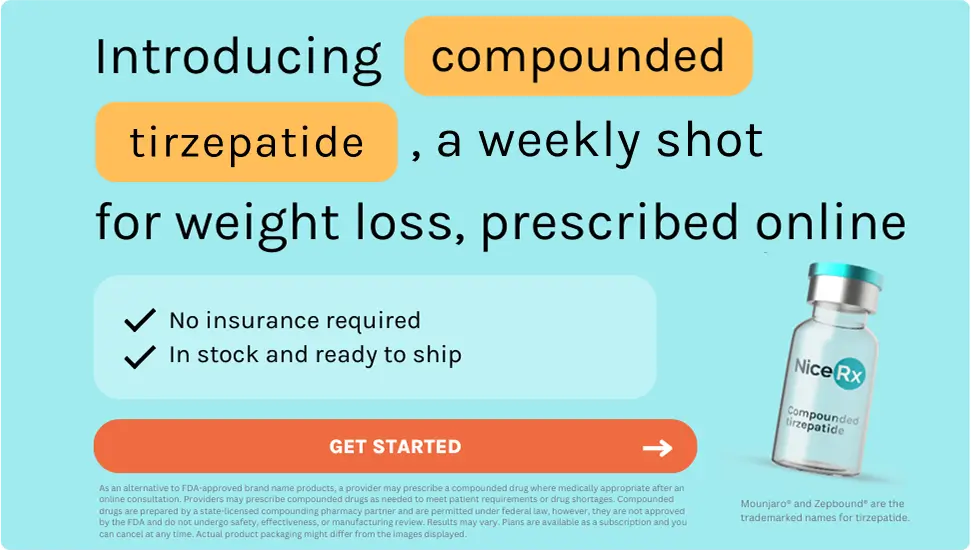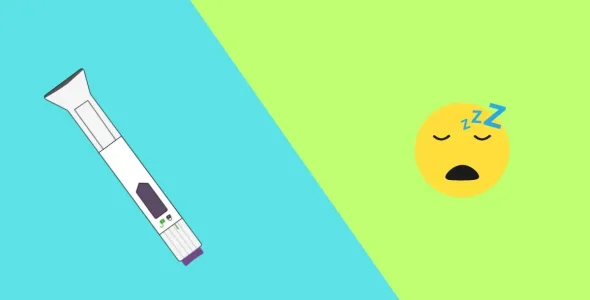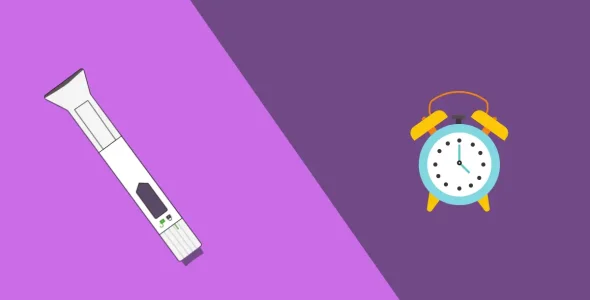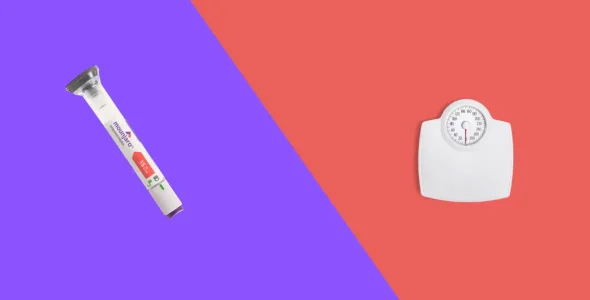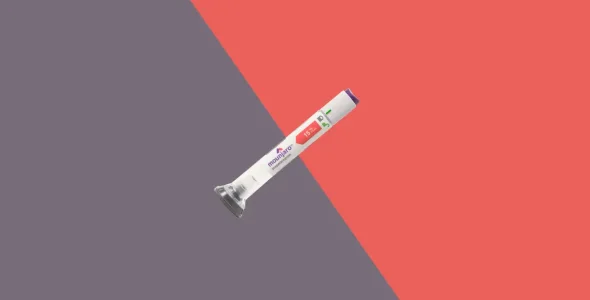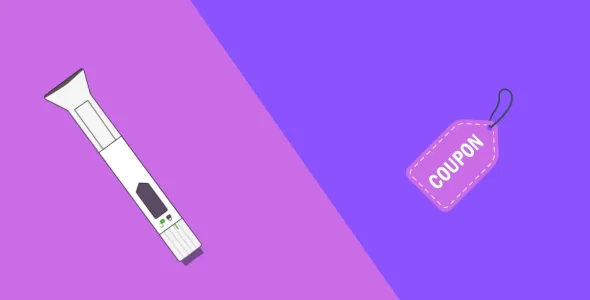Mounjaro generic availability (2025)
Mounjaro is a game-changer for type 2 diabetes and weight loss (off-label), but it’s expensive – are you waiting for a more affordable generic option? Here's what you need to know about the current availability and when a generic is expected.
Key highlights
- An FDA-approved generic version of Mounjaro won’t be available until 2036.
- Compounded tirzepatide is not the same as a generic version of Mounjaro.
- Until a generic version of Mounjaro is available, patients may be able to save money with insurance, coupons from websites like GoodRx and SingleCare, or the Mounjaro Savings Card from Eli Lilly.
- If you are using Mounjaro for weight loss (off-label), you can also consider buying Zepbound vials which contain the same active ingredient, tirzepatide. Without insurance, it costs $499/month through LillyDirect.
Mounjaro (tirzepatide) is a novel medication that works by activating both glucagon-like peptide-1 (GLP-1) and glucose-dependent insulinotropic polypeptide (GIP) receptors. It’s FDA-approved to help improve blood sugar control in adults with type 2 diabetes mellitus, but it’s also known for causing significant weight loss in many patients.
The FDA has recently approved generic versions of two other GLP-1 drugs, Victoza (liraglutide) and Byetta (exenatide). Many people are wondering if a generic version of Mounjaro will also be available soon.
Mounjaro has gained a lot of attention for how effective it is, but its high cost as a brand-name drug has many people looking for more affordable options.
Looking for a generic Mounjaro? Understand the current status, when a generic version will be available, FDA-approved alternatives, and cost-saving tips.
Is there a generic for Mounjaro?
As of now, there is no FDA-approved generic version of Mounjaro available in the United States.
Mounjaro is a brand-name prescription medication developed and marketed by Eli Lilly and Company. It contains the active ingredient tirzepatide, which is used to improve blood sugar control in adults with type 2 diabetes.
Mounjaro is currently protected by a series of patents held by Eli Lilly. These patents cover both the compound tirzepatide itself and its specific formulation for therapeutic use.
In the U.S., pharmaceutical patents typically last about 20 years from the filing date, giving the brand manufacturer a long period of market exclusivity. However, this exclusivity can be extended by regulatory mechanisms such as patent term extensions or exclusivity granted by the FDA.
This exclusivity helps companies recover the high costs of drug development but also delays the availability of lower-cost generics.
These patents effectively block the entry of generic versions until they expire or are successfully challenged in court by generic drug companies. In the case of tirzepatide and Mounjaro, key patents are expected to remain in effect for over 10 more years, meaning the availability of a lower-cost, FDA-approved generic version is uncertain and not expected soon.
Zepbound, which also contains tirzepatide, is approved for weight loss, but there isn’t a generic version of it yet. Currently, there are no generic versions available for other GLP-1 receptor agonists such as Ozempic, Wegovy, or Trulicity.
Side effects of Mounjaro
Mounjaro is a weekly injection (single-dose pens) administered under the skin (subcutaneously). You can inject the medication under the skin of your stomach, upper arm, or thigh.
While Mounjaro can help with lowering blood sugar levels and promoting weight loss, it’s important to be aware of possible side effects and safety tips when using this medication.
The most common side effects of Mounjaro may include:
- Nausea
- Diarrhea
- Vomiting
- Decreased appetite
- Constipation
- Upset stomach
- Headache
- Hoarseness
- Abdominal pain
Other rare and more serious side effects of Mounjaro may include:
- Blurred or changed vision (diabetic retinopathy)
- Low blood sugar (hypoglycemia)
- Gallbladder problems
- Depression or anxiety
- Serious allergic reactions
- Pancreatitis (Inflammation of the pancreas)
- Injection site reactions
If you experience any of these side effects, speak with your doctor right away.
Mounjaro has a black box warning from the FDA for the risk of thyroid tumors or thyroid cancer, including medullary thyroid carcinoma (MTC).
You should not use Mounjaro if you:
- Are allergic to tirzepatide or any of the ingredients
- Have a personal or family history of medullary thyroid cancer or Multiple Endocrine Neoplasia syndrome type 2 (MEN 2)
- Have type 1 diabetes
- Are pregnant or planning to become pregnant
- Are breastfeeding, as it is not known if Mounjaro passes into breast milk
- Have serious kidney or liver problems
- Have a severe gastrointestinal disease such as gastroparesis (delayed stomach emptying)
Understanding compounded tirzepatide
Compounded tirzepatide is a customized version of the medication, typically made at specialty compounding pharmacies but not reviewed or approved by the U.S. Food and Drug Administration (FDA).
Most insurance companies do not cover compounded medications because these medications have not received approval from the FDA.
Compounded versions of tirzepatide are available when there are shortages of brand-name drugs or when the patient needs a custom dose or formulation that is not commercially available.
It’s important to understand that compounded tirzepatide is not FDA-approved for treating type 2 diabetes, especially at the same dosages and formulations used in Mounjaro. This means its safety and effectiveness for this specific use are not guaranteed.
There are also concerns about the quality and source of ingredients in some compounded tirzepatide products. Some compounding pharmacies may use tirzepatide salts, which are not safe or source their ingredients from unregistered or unverified manufacturers, raising potential safety risks.
For those still seeking access to compounded tirzepatide, the safest option is to go through 503A state-licensed pharmacies or 503B FDA-registered outsourcing facilities with a valid prescription. However, it’s important to remember that these are not true generics and do not carry the same FDA approval as Mounjaro.
The importance of generic Mounjaro for type 2 diabetes
An FDA-approved generic version of Mounjaro could offer major benefits for people managing type 2 diabetes, especially in terms of cost and access.
The current list price of brand-name Mounjaro is $1,069 per month without insurance, making it difficult for many patients to afford it. A generic alternative could significantly lower this cost, allowing more people to access the treatment they need.
Generic drugs are typically much cheaper than brand-name versions because generic drug manufacturers don’t have to spend money on research, development, or marketing. Once a brand-name drug’s patent expires, other companies can produce generics, which leads to competition and lower prices.
An affordable generic version of Mounjaro could also have a positive impact on healthcare overall. Lower drug costs could mean better adherence to treatment, as patients are more likely to take their medication regularly when it’s affordable. This could lead to better blood sugar control, fewer diabetes-related complications, and lower long-term healthcare costs for both patients and the healthcare system.
In short, an FDA-approved generic Mounjaro would not only improve access but could also lead to better health outcomes for millions of people living with type 2 diabetes.
Mounjaro cost and insurance coverage
The list price of Mounjaro is $1,069.08 per fill according to the manufacturer, Eli Lilly. Without insurance, the retail price is $1,000-$1,200 or more per month. Each fill includes 4 prefilled pens which is a 28-day supply.
The list price isn’t the price you’ll pay at the pharmacy. For people paying out of pocket, the average retail price can vary based on many factors such as your location, the pharmacy you use, the reason your doctor prescribed it, and if you have insurance coverage for the medication.
Coverage can vary by insurance plan. Many insurance plans including Medicare and Medicaid cover Mounjaro for type 2 diabetes but will not cover it off-label for weight loss.
Check your insurance plan’s medication list (formulary) or contact your insurance provider to see if Mounjaro is covered. Some plans may have restrictions like step therapy or prior authorization before covering Mounjaro. Employer-sponsored insurance may cover Mounjaro for type 2 diabetes, but most plans, including Medicare and Medicaid plans, won’t cover Mounjaro or Zepbound for weight loss or obesity due to the Medicare Prescription Drug, Improvement, and Modernization Act law that prohibits it. Contact your insurance provider for coverage details.
Mounjaro savings tips
Here are a few strategies for potentially reducing the cost of brand-name Mounjaro:
Mounjaro Savings Card
The Mounjaro savings card is a program offered by Eli Lilly that helps reduce the cost of the medication.
If you qualify for the Mounjaro Savings Card, you can pay as low as $25 for a 1-month or 3-month prescription. You need to have commercial insurance drug plan that covers Mounjaro and a prescription for an FDA-approved use such as type 2 diabetes.
You cannot be enrolled in any state, federal, or government-funded healthcare program, such as Medicaid, Medicare, Medicare Part D, Medicare Advantage, Medigap, DoD, VA, TRICARE, or any state prescription drug assistance program. You must also be a United States or Puerto Rico resident and be at least 18 years old.
The Mounjaro savings card is a great tool to help manage the cost of diabetes treatment. It can reduce the amount you pay for Mounjaro, making the medication more affordable if your insurance doesn’t cover the full cost of the medication. By using the savings card, you can save on your prescription, stay on track with your treatment plan, and manage your diabetes.
Mounjaro coupons and discount cards
You can get Mounjaro coupons or Mounjaro prescription discount cards through prescription drug savings companies like GoodRx and SingleCare, which offer up to 25% off the retail price. These coupons work at pharmacies near you without insurance. Prices vary by quantity, pharmacy, location, and medication form.
90-day refills
Some mail-order pharmacies offer discounts on a 3-month supply of medications. Ordering a 90-day supply at a time can also be more convenient. Eligibility may vary by your insurance plan’s quantity limits.
FDA-approved alternatives to Mounjaro
Always remember that any changes to your diabetes medication should only be made under the medical advice of a healthcare provider. Tell your doctor or pharmacist about all prescription, over-the-counter medications, supplements, and vitamins you are taking.
Here are some commonly used GLP-1 receptor agonist alternatives to Mounjaro currently available in the U.S. for managing type 2 diabetes:
Ozempic (semaglutide)
Ozempic is a prescription medication approved by the U.S. Food and Drug Administration (FDA) for the treatment of type 2 diabetes. Its active ingredient, semaglutide, is a GLP-1 receptor agonist that helps regulate blood sugar levels and also promotes weight loss. However, a lower dose of semaglutide is used in Ozempic as compared to that in Wegovy, a medication specifically approved for chronic weight management.
Ozempic is typically prescribed in doses ranging from 0.5 mg to 2.0 mg once weekly.
Despite being approved only for diabetes, Ozempic is sometimes prescribed off-label for weight loss, especially when Mounjaro is unavailable or not covered by insurance. Doctors may consider this approach for patients who meet clinical criteria for weight management.
Novo Nordisk has a savings card program for Ozempic. If eligible, you can pay as low as $25/month.
Ozempic is also available through the Novo Nordisk patient assistance program, for those who meet insurance and income requirements. If eligible, you could receive free Ozempic directly from the manufacturer.
Wegovy (semaglutide)
Wegovy contains the same active ingredient as Ozempic, semaglutide, but at a higher dose (2.4 mg). It is specifically approved for chronic weight management in adults with obesity or overweight who have at least one weight-related health condition, such as high blood pressure or type 2 diabetes.
In addition to weight loss, Wegovy is approved to lower the risk of serious heart problems for adults who are overweight or obese and have heart disease.
Wegovy and Ozempic are also FDA-approved for reducing the risk of major cardiovascular events (heart attack, stroke) in adults with type 2 diabetes and known heart disease and for reducing the risk of worsening kidney disease and cardiovascular death in adults with chronic kidney disease and type 2 diabetes.
Novo Nordisk has a savings card program for Wegovy. If eligible, you could get Wegovy for as low as $0/month.
Zepbound (tirzepatide)
Zepbound is an FDA-approved weight loss drug that contains the same active ingredient as Mounjaro, tirzepatide.
Zepbound is FDA-approved for weight management in adults with obesity (BMI of 30 or higher) or overweight (BMI of 27 or higher) and related health issues like high blood pressure or diabetes.
Zepbound works by targeting two hormones (GLP-1 and GIP) to help reduce appetite and improve blood sugar control, making it a powerful option for reducing body weight. It’s administered as a weekly injection, similar to Mounjaro.
Eli Lilly has a savings card program for Zepbound. If eligible, you can pay as low as $25/month.
Trulicity (dulaglutide)
Trulicity (dulaglutide) is a once-weekly subcutaneous injectable GLP-1 agonist that helps control blood sugar levels and reduce cardiovascular risk in adults and children from 10 years of age with type 2 diabetes. Some people may also experience weight loss with it.
Insurance coverage for Trulicity may vary, and some plans may cover it for diabetes but not for weight loss. If you can’t afford it, the manufacturer has assistance programs that may help reduce the cost for eligible patients. Check with your insurance provider and your healthcare team for details.
Eli Lilly has a Trulicity savings program and eligible patients can get 12 pens (3-month supply) for as low as $25 per month.
Victoza (liraglutide)
Victoza (liraglutide) is another injectable GLP-1 agonist that lowers blood sugar in adults with type 2 diabetes with known heart disease, but it needs to be injected once a day instead of once a week because it doesn’t stay in the body as long as Mounjaro and other alternatives.
Unlike Mounjaro, Victoza has proven heart protection benefits. It’s approved for individuals aged 10 and older. However, Victoza has fewer side effects compared to Mounjaro.
Victoza is covered by Novo Nordisk’s Patient Assistance Program. Novo Nordisk does not have a savings card program for Victoza.
Saxenda (liraglutide)
Saxenda is another GLP-1 medication with the same active ingredient as Victoza, liraglutide. It’s used for chronic weight management in combination with a reduced-calorie diet and increased physical activity in adults with obesity or overweight.
Saxenda is a daily injection approved for weight loss. Approved in 2010, Saxenda (liraglutide) was the first GLP-1 medication approved for weight loss in adults with obesity or overweight with at least one weight-related health issue. It is also approved for certain children 12 and older with obesity.
Saxenda, being an older GLP-1 medication, has some downsides compared to newer options like Zepbound. For example, it’s taken daily instead of weekly, and you might lose less weight with it.
In a 56-week clinical trial, people taking Saxenda 3 mg once a day lost an average of 18 lbs, while those using a placebo injection only lost 8 lbs. It has also shown heart health benefits for people with diabetes or those at high risk of heart disease.
Novo Nordisk has a savings card program for Saxenda. If eligible, you could get Saxenda for as low as $25/month.
Generic liraglutide
The FDA approved liraglutide, the first generic of a once-daily GLP-1 injection, in December 2024.
Manufactured by Hikma Pharmaceuticals, this once-daily injectable is for glycemic control in adults and pediatric patients 10 years and older with type 2 diabetes. It has a boxed warning for thyroid C-cell tumors and other safety considerations.
Rybelsus (oral semaglutide)
Rybelsus (same active ingredient as Ozempic) is an oral tablet that is FDA-approved for lowering blood glucose levels in adults with type 2 diabetes and may also help with weight loss. Although it’s not FDA-approved to reduce the risk of heart attack or stroke, studies suggest it’s safe for people with heart disease.
Unlike Ozempic, which has proven cardiovascular benefits in people with type 2 diabetes and heart disease, Rybelsus does not yet have established evidence of heart protection, though research is ongoing. It’s a convenient option for those who prefer pills.
Novo Nordisk also has a savings program that provides access to Rybelsus to eligible patients for as low as $10/month.
Other classes of diabetes medications
In addition to GLP-1 receptor agonists like Mounjaro, there are several other classes of medications used to help manage blood sugar in people with type 2 diabetes:
- SGLT-2 inhibitors (Jardiance, Farxiga): These drugs help lower blood sugar by causing the kidneys to remove glucose through urine. They can also offer heart and kidney benefits but may increase the risk of urinary tract infections and dehydration in some people.
- DPP-4 inhibitors (Januvia): These medications work by increasing insulin release and decreasing the amount of glucose produced by the liver. They are generally well-tolerated with fewer side effects but are less effective for weight loss and glucose control compared to other GLP-1 options.
- Metformin (often the first-line therapy), sulfonylureas, thiazolidinediones (TZDs), and insulin. Each medication works differently and has its benefits and risks, depending on the patient’s overall health, treatment goals, and response to medication.
When will Mounjaro generic be available in the U.S.?
Generic versions of a drug can only be made after the brand-name drug’s patent and exclusivity rights expire. For Mounjaro, the company Eli Lilly has a patent on both the medicine and the injection device used to deliver it.
The exact timeline for when a true generic version of Mounjaro will become available remains uncertain due to ongoing patent protections. Eli Lilly’s patents on tirzepatide and its injection device are expected to last until at least 2036, but legal delays and challenges could delay the availability of generics to 2037 or even 2038.
Teva and Lupin are among the companies expected to be first in line to produce authorized generics once these patents expire or are successfully challenged.
The process is complicated by the nature of pharmaceutical patent law, which involves not just patents on the drug itself, but also on formulations, delivery methods, and manufacturing processes. Legal disputes over these patents could further delay generic entry, especially for tirzepatide used specifically for managing type 2 diabetes.
Meanwhile, there are growing efforts and ongoing conversations around improving access to affordable medications for people with type 2 diabetes, including calls for lower prices, expanded insurance coverage, and greater transparency in drug pricing.
FAQs
Can I get Mounjaro for $25 without insurance?
Yes, you can get Mounjaro for as low as $25 if you use a savings card from the manufacturer, but only if you have private commercial insurance that covers Mounjaro.
Is compounded tirzepatide as effective as Mounjaro?
Compounded tirzepatide contains the same active ingredient as Mounjaro and there are no clinical studies to substantiate its effectiveness. It lacks FDA approval, meaning it hasn’t undergone the same rigorous testing for safety and consistency as the brand name drug.
What’s the closest drug to Mounjaro?
Zepbound is the closest drug to Mounjaro because it has the same active ingredient, tirzepatide. Wegovy and Ozempic are similar but use a different ingredient called semaglutide.
Does Canada sell generic Mounjaro?
No, Canada does not currently sell a generic version of Mounjaro (tirzepatide). However, Sandoz plans to launch a generic version of semaglutide (the active ingredient in Ozempic and Wegovy) in Canada in 2026, following the expiration of Novo Nordisk’s patent.
Conclusion
As of 2025, there is no FDA-approved generic version of Mounjaro available in the United States.
While compounded tirzepatide has been offered by some pharmacies, it is not a generic drug and lacks the rigorous safety, quality, and efficacy reviews of FDA-approved medications.
If you have private or commercial insurance, you could pay as low as $25 with the Mounjaro Savings Card. If you were prescribed the medication for weight loss, you should check if your insurance covers other GLP-1 weight loss medications like Wegovy or Zepbound, which also have savings card programs.
It’s essential to consult with a healthcare provider to choose the best treatment plan that is suitable for type 2 diabetes based on individual needs, blood sugar goals, insurance coverage, and cost considerations.
You can also speak with your healthcare provider about other options, including alternative medications that may be less expensive or covered by your insurance plan.

